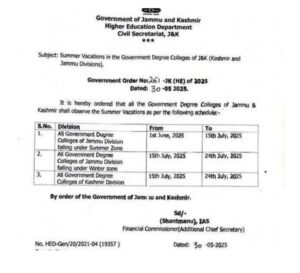Illegal Mining, Skyrocketing Prices, and Policy Gaps: J&K Govt Admits Regulatory Failures Amid Public Outcry

Srinagar | April 8, 2025 — In a startling revelation that reignites concerns over unregulated mining across Jammu and Kashmir, the government on Tuesday acknowledged systemic lapses in policy implementation, regulatory oversight, and environmental safeguards—admissions made in response to a series of starred questions raised by 14 legislators in the Legislative Assembly.
The questions, raised by MLAs including Ali Mohammad Dar, Mir Saifullah, Zafar Ali Khatana, and others, addressed a range of critical issues—from environmental degradation and illegal mining to delays in auctioning and skyrocketing costs of construction materials such as sand, boulders, and gypsum.
Saderkoot: Traditional Craft Caught in Bureaucratic Limbo
Among the most notable disclosures was the status of historic limestone quarries in Saderkoot, Bandipora. Despite sustained local advocacy and examples from other states like Gujarat and Rajasthan, the government maintained it would not classify the area’s limestone as a minor mineral unless certain criteria are met. This stance has effectively stalled any revival of the centuries-old local stone craft. A committee has been formed to explore alternatives, but no tangible progress has been reported so far.
Samba: Legal, Yet Suspended
In Samba district, while the government denied any official ban on mining, it admitted that operations in 16 out of 19 auctioned blocks remain suspended due to pending environmental clearances. Current operations depend on short-term permits and material imports from neighboring regions. Despite promises of easing supply for PMAY beneficiaries and key public works, locals continue to suffer from severe material shortages and inflated prices.
Poonch: Illegal Mining Persists Despite Crackdown Claims
Illegal mining remains rampant in Poonch’s Haveli Constituency. Although the administration cited the creation of flying squads and multi-departmental task forces, actual enforcement appears weak. The Mining Department hopes to implement a Satellite-based Mining Surveillance System with BISAG’s support, but the system is still under development, leaving a regulatory vacuum on the ground.
Bridges and Blame: Floods or Mining?
In a controversial statement, the government denied that aggressive mining activities had damaged the Birma and Salmeh bridges—vital lifelines for over 57,000 residents. Instead, it blamed the 2021 monsoon floods. However, the proximity of intense mining near riverbeds during that period has led to serious skepticism and unanswered questions from civil society and lawmakers alike.
Udhampur: No Study, Alarming Signs
Despite visible ecological strain, the government admitted it has not conducted any dedicated study on groundwater depletion due to rampant riverbed mining in Udhampur. Meanwhile, residents report a staggering 300–400% increase in the prices of sand and stone—costs that disproportionately burden rural populations and housing scheme beneficiaries.
Baramulla: Auction Delays Fuel Black Market
In Baramulla, not a single mineral block has been auctioned in the past two years. The only active operation is gypsum extraction in Uri, which yielded over 5 lakh metric tonnes in the last 24 months. The lack of legal supply has forced contractors and residents to rely on unregulated sources, fueling illegal trade and market manipulation.
Digital Solutions: Promise or Pretense?
To enhance transparency, the government said it has digitized the challan system via a secured e-portal selected through GeM tendering. However, experts argue that without real-time ground-level enforcement, the portal is unlikely to significantly curb illegal operations or black-market activities.
Conclusion: Price of Progress?
As the government scrambles to plug the policy gaps and restore public confidence, the people of Jammu and Kashmir continue to bear the brunt of delayed clearances, inflated material costs, and unchecked environmental degradation. With infrastructure projects at risk and ecological damage mounting, the question remains: how long can this mining muddle continue?





